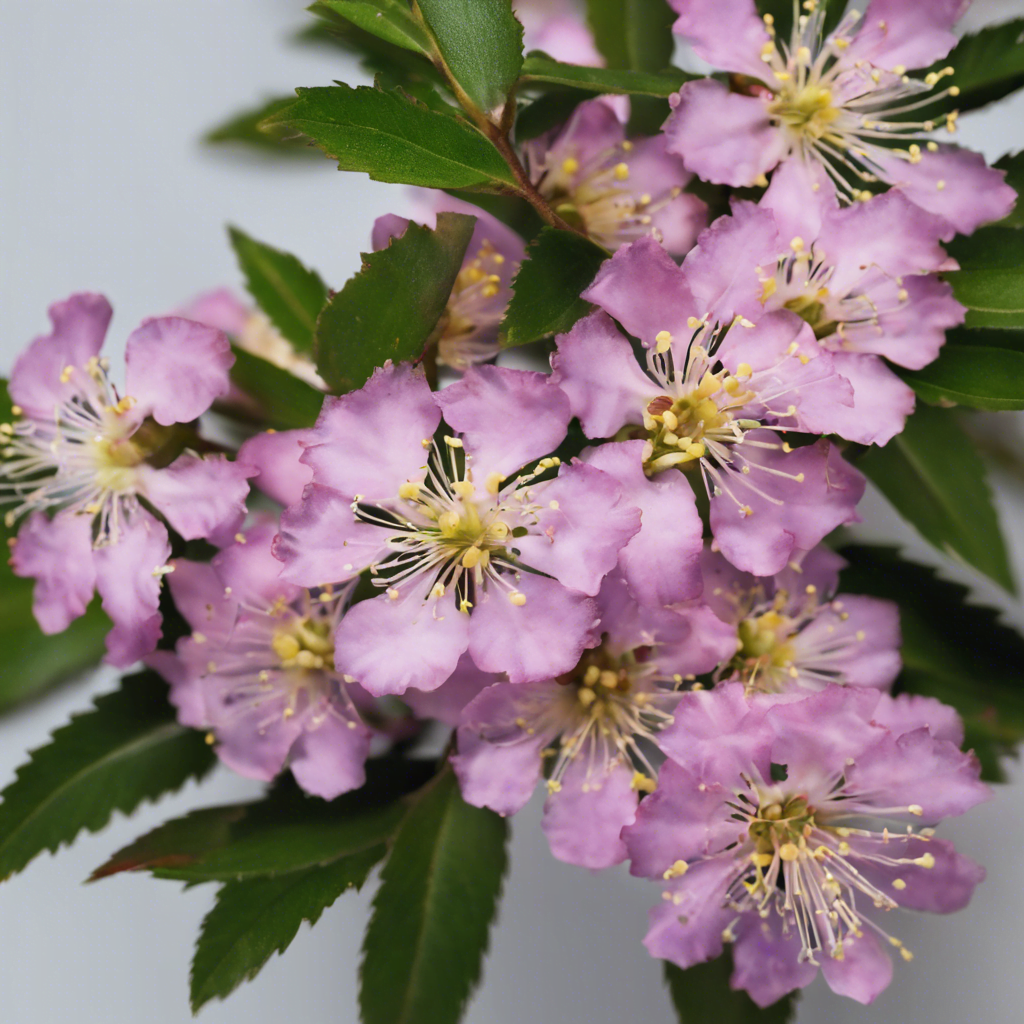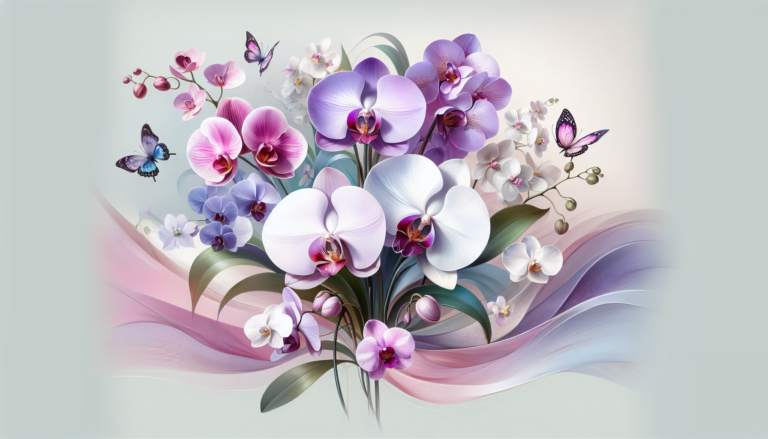The Symbolism Behind the Myrtle Flower
The myrtle flower, with its delicate star-like blossoms and evergreen foliage, has captured the hearts and minds of people across the globe. Its beauty and rich symbolism have made it a cherished plant in gardens and wild landscapes alike.
Mythological Significance
The myrtle flower holds a significant place in Greek and Roman mythologies. Let’s dive into its mythological roots:

Greek Mythology
- 👸 Aphrodite’s Flower: The myrtle was sacred to Aphrodite, the goddess of love, beauty, and pleasure. It was planted in her temple gardens, and she was often depicted wearing a myrtle crown or wreath, linking the flower to marital love, fidelity, and everlasting beauty.
- 🌾 Demeter’s Connection: The myrtle also held importance for Demeter, the goddess of agriculture and harvest. Myrtle branches were seen as auspicious for agriculture, symbolizing abundance and prosperity.
Roman Mythology
- 🌊 Venus’s Birth: In Roman mythology, Venus (Aphrodite’s counterpart) was said to have emerged from the sea holding a sprig of myrtle, solidifying its association with love and beauty.
- 🏆 Victorious Crowns: Like the Greeks, the Romans used myrtle wreaths to crown victors in bloodless battles or athletic competitions, representing a peaceful victory achieved through skill and perseverance.
Beyond Greece and Rome
- 📖 Judaism: The myrtle (Hadassah) is one of the four sacred plants used in the Jewish festival of Sukkot, representing peace, community, and good works.
- ✝️ Christianity: In Christian tradition, the myrtle lost its association with female sexuality and came to symbolize the Virgin Mary’s purity.
Symbolism in Various Cultures
Love and Marriage
The myrtle flower’s association with love and marriage spans continents and centuries:
- 💍 In European folklore, myrtle is traditionally included in bridal bouquets and wreaths, dating back to Victorian times when it symbolized a happy marriage and lasting love.
- 🇩🇪 In Germany, myrtle plants are often presented to brides for good luck, representing love, fidelity, and a prosperous union.
- 🌍 The practice of including myrtle in weddings also extends to Middle Eastern cultures, where it is seen as a harbinger of marital bliss.
Spiritual and Medicinal Uses
- 🕯️ The myrtle flower has been used in cleansing rituals or burned as incense for its purifying properties and warding off negative energy.
- 💐 Myrtle essential oil is valued in aromatherapy for its calming and uplifting properties, relieving stress, and promoting emotional well-being.
- 💊 Historically, myrtle leaves and berries were used for their therapeutic properties, treating ailments like respiratory issues, skin conditions, and digestive problems. (Always consult a medical professional before using herbal remedies.)
The myrtle flower’s significance extends beyond aesthetics, serving as a symbol of spiritual connection, protection, and potential medicinal benefits, though responsible use and consult a medical professional are crucial when considering its medicinal properties.
Love and Marriage
The myrtle flower’s association with love and marriage stretches back millennia and is firmly rooted in Greek and Roman mythology. Let’s delve deeper into its symbolic journey:
Greek Mythology
- 💘 Aphrodite’s Embrace: The myrtle was cherished as sacred to Aphrodite, the goddess of love, beauty, and pleasure. It adorned her temple gardens, and she was often depicted crowned with myrtle, linking the flower to marital love, fidelity, and everlasting beauty. This made the myrtle a popular wedding choice and a symbol of a loving, committed union.
- 🌱 Demeter’s Blessing: The myrtle also held significance for Demeter, the goddess of agriculture and growth. Myrtle branches were seen as auspicious for agriculture, symbolizing abundance and prosperity. This association with flourishing life further cemented Myrtle’s connection to a happy and fruitful marriage.
Roman Mythology
- 💐 Venus’s Birth: In Roman mythology, Venus (Aphrodite’s counterpart) emerged from the sea holding a sprig of myrtle, solidifying its association with love and beauty. Lovers would exchange myrtle sprigs as tokens of affection, and the flower became a symbol of desired unions.
- 🏆 Victorious Love: The Romans used myrtle wreaths to crown victors in bloodless battles or athletic competitions like the Greeks. Here, the myrtle symbolized a peaceful victory achieved through skill and perseverance, reflecting desired qualities in a loving marriage — commitment, respect, and mutual success.
Beyond Mythology
- 📖 Judaism: The myrtle (Hadassah) is one of the four sacred plants used in the Jewish festival of Sukkot. It represents peace, community, and good works, essential for a harmonious and supportive marriage.
- ✝️ Christianity: While the focus on female sexuality shifted, the myrtle found a new meaning in the Christian tradition, symbolizing the Virgin Mary’s purity and representing the potential for a marriage built on love, respect, and faithfulness.
The Everlasting Sprig
- 👸 Royal Weddings: Queen Victoria’s inclusion of myrtle from her mother’s garden in her wedding bouquet in 1858 sparked a tradition still followed in British royal weddings today, highlighting the enduring legacy of the myrtle as a symbol of love and marital bliss.
- 🌍 A Touch of Tradition: Myrtle is still incorporated into wedding bouquets and decorations in various cultures. Its delicate white flowers and fragrant scent continue to represent a couple’s hopes for a love that blooms and endures throughout their married life.
Spiritual and Medicinal Uses
The myrtle flower’s significance extends beyond love and mythology, holding a special place in spiritual and medicinal realms:
Spiritual Uses
- 🕯️ Purification and Cleansing: In some cultures, the myrtle flower is used in cleansing rituals or burned as incense. Its smoke is believed to purify a space and ward off negative energy.
- 🧿 Protection and Blessings: The myrtle’s association with the goddess Aphrodite lends it a protective quality in love matters. It’s sometimes carried as a charm or placed in the home to safeguard relationships and attract positive energies.
- 🙏 Connection to the Divine: The myrtle’s use in various religious traditions, like Jewish Sukkot and its connection to deities, suggests its symbolic role in connecting with the divine or higher power.
Medicinal Uses (Disclaimer: Always consult a medical professional before using herbal remedies)
- 💊 Antiseptic and Wound Healing: Myrtle leaves contain compounds with antiseptic properties. Traditionally, a poultice made from crushed leaves has been used to clean wounds and promote healing.
- 🫁 Respiratory Relief: Myrtle’s essential oil has decongestant properties. It may be used in aromatherapy for coughs, colds, and respiratory issues. (Caution: Inhaling concentrated essential oils can be harmful. Always consult a qualified aromatherapist.)
- 🍽️ Digestive Aid: Myrtle berries have been used traditionally to soothe digestive issues like diarrhea and stomach cramps.
The Myrtle’s Holistic Harmony
The Myrtle flower embodies a holistic approach, connecting love, spirit, and well-being. While its medicinal uses have historical roots, it’s crucial to consult a medical professional before using myrtle for any health concern, as there can be interactions with medications, and pregnant or breastfeeding women should avoid using myrtle altogether.
Conclusion
The myrtle flower has captured the hearts and imaginations of people across the globe with its delicate beauty and rich symbolism.
From its roots in ancient mythology to its enduring presence in contemporary wedding traditions, this cherished plant holds a special place in our collective consciousness.
Whether representing love, purity, transformation, or healing, the Myrtle flower is a beautiful reminder of the power of symbolism and how nature can inspire and enrich our lives.
Its versatile significance spans continents and cultures, reminding us of our enduring connections.
So, the next time you encounter this enchanting bloom, take a moment to appreciate the tapestry of stories and traditions it carries.
Who knows, you might even be inspired to incorporate the myrtle into your life through a romantic gesture, a spiritual practice, or simply by admiring its timeless beauty.
FAQ
The Symbolism Behind the Myrtle Flower
Yes, myrtle is a strong symbol of love. Its association with Aphrodite and its use in wedding traditions solidify this meaning. The flower represents romantic love, marital fidelity, and a love that endures.
What do roses and myrtle symbolize together?
Roses and myrtle, often seen together in wedding bouquets, represent a beautiful complement. The rose symbolizes passionate love and beauty, while the myrtle signifies enduring love, commitment, and happiness. Together, they represent a well-rounded union.
What does the myrtle symbolize in a wedding?
In a wedding, the myrtle flower symbolizes a couple’s hopes for a lasting and loving marriage. It represents fidelity, commitment, and the potential for a love that grows and endures throughout their lives.
Why are myrtles a symbol of Aphrodite?
Myrtles are symbols of Aphrodite because of their association with love, beauty, and purity. These qualities perfectly embody the Greek goddess of love. Additionally, some myths tell of Adonis, Aphrodite’s lover, being transformed into a myrtle tree upon his death.
Do flowers symbolize anything spiritually?
Yes, flowers can hold deep spiritual symbolism across cultures. The myrtle flower, for example, can represent purification, connection to the divine, and positive energy. Different flowers will have varying meanings depending on the tradition.







